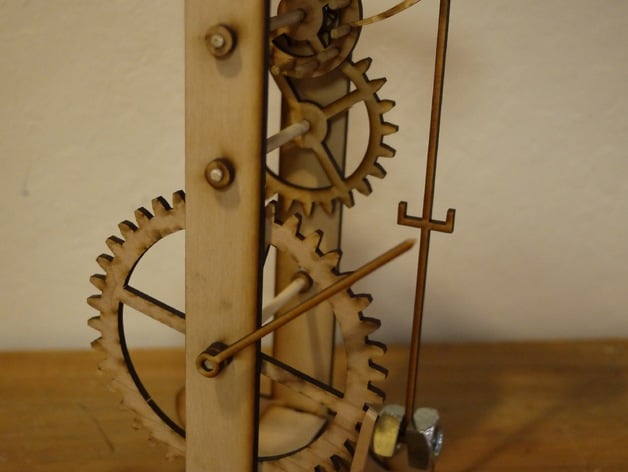
Galileo's Pendulum Clock
thingiverse
This pendulum clock design, inspired by Galileo's drawings, serves as an educational tool featuring gears, rubber band energy storage, escapement mechanism, and pendulum properties exploration. Its pendulum allows students to adjust weight and length impacting period by moving washers along notches. Constructed from 1/4" plywood with 1/4" dowels, it requires nylon washers for friction reduction in the frame. Assembled using provided images for reference, users may need to fine-tune catches' positions and super glue them in place for optimal functionality.
With this file you will be able to print Galileo's Pendulum Clock with your 3D printer. Click on the button and save the file on your computer to work, edit or customize your design. You can also find more 3D designs for printers on Galileo's Pendulum Clock.
